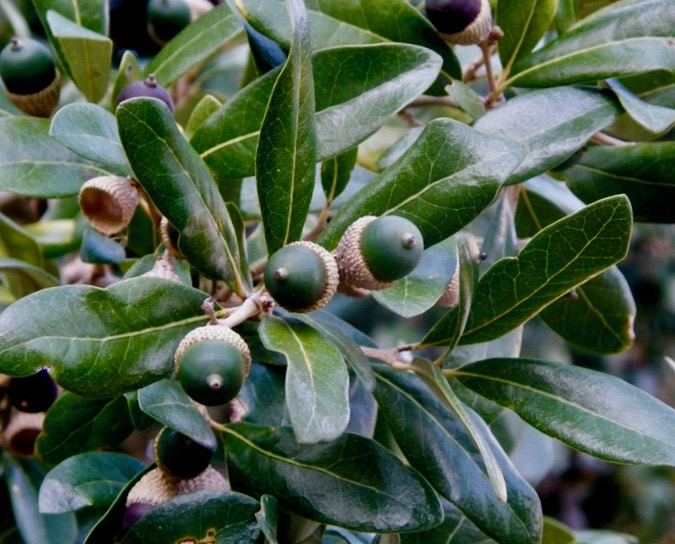
By Mary Reid Barrow
Walking on the Feeder Road the other day, I looked up and out of the blue, I found myself just so happy to be walking under a beautiful green archway of live oak branches.
I posted this photo on my Facebook page and commented about how lucky I was to be able to take walks all winter long under a canopy of green leaves.
And here I am, still talking about it. Live oaks, our iconic tidewater tree, line the Feeder Road in many places where their spreading branches reach across the road for the pleasure of any one–walkers, bikers, dogs, cars and more—who chooses to look up..
Live oaks aren’t called “live” oaks for nothing. Many beautiful tree species, including other oaks, grace our coast, but the ones with leaves, as opposed to needles, are mostly deciduous and lose their leaves in winter. Not the live oaks!
It’s easy to take this special feature for granted. But how often do we get the chance to walk through a cathedral on a winter stroll? That’s how I felt the other day when I looked up into this shady, graceful bower.
Live oaks are special in other ways too. You could say they are real survivors. They stand their ground, protecting our land from soil erosion and rarely succumbing to hurricanes and floods.
And like many trees, live oaks also absorb carbon dioxide and return oxygen to the air we breathe. Yet, with all these practical assets, live oaks can still create a utopian world on the Feeder Road, enhancing our lives (and walks) and the lives of squirrels birds, insects and other critters too.

But one thing the trees can’t withstand is the chain saw. Live oaks are regularly cut down to make room for houses. And most of those trees are in areas along the Oceanfront and Bayfront that are prone to flooding, areas that need a few good live oaks for protection.
My hope for the new year is that our canopies of green become as important to our city as our economic development. With climate change upon us, It won’t be long before that will be a must …if any trees are left.
Do you have a favorite tree or plant with a story to tell? What relationships have you observed between plants and critters? Who eats whom? Who has babies where? Send an email to maryreid@lrnow.org